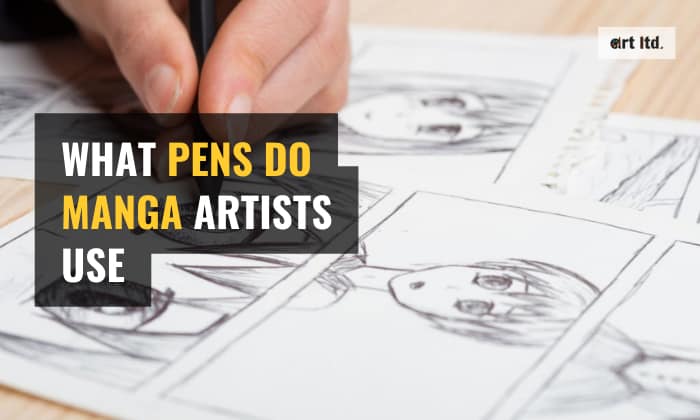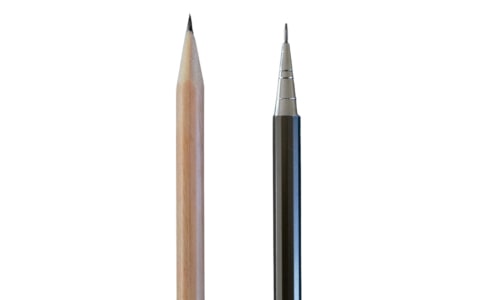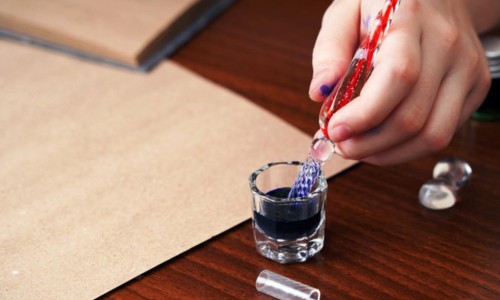When it comes to manga artistry, pens aren’t just sketching tools; they’re also the secret manga art supplies that make characters and stories come alive.
What pens do manga artists use? They mainly use dip pens with black ink for lines and other illustration tools like brush and technical drawing pens.
Read on to explore these pens’ unique features and inks that make them indispensable for creating captivating manga artwork.
Table of Contents
Types of Pens for Manga Drawing
1. Pencils
Even seasoned mangaka will need to sketch their drawing. For this purpose, they’ll use pencils, which can be either wooden or mechanical. Usually, manga artists will opt for the latter choice if they require uniform lines and the former for varying widths.
2. Dip Pens/Nip Pens
A dip pen, commonly used in manga drawing, is favored for its ability to produce various line weights. Artists can adjust the thickness of lines by altering the pressure and angle of the pen, offering flexibility in creating different visual effects.
Primarily featuring pitch black and white ink, these pens are for drawing lines, frames, or detailed backgrounds, depending on what nib type is used.
- G-pen nib: The G pen nib is great for creating thick and contour lines. One of its advantages is the ease with which line thickness can be subtly adjusted by varying the pressure applied.As G-pen nibs are great for subtlety, they’re also the most common choice for manga artists. Usually, the artist will sketch the outline with a mechanical pencil first, then use a G-pen nib to finalize the lines.
- Mapping pen nib: Mapping pen nibs excel at drawing delicate lines and tracing. They are often preferred for intricate details, such as the character’s hair, animal fur, or eyelashes.Mapping pens can be further divided into two sub-categories: spoon nibs and school nibs. Both can offer uniform line thickness. The latter is used for thin lines, while the former is employed for thicker lines. These manga inking pens are chosen when consistency in line width is essential.
3. Drawing Pens
Drawing pens (aka fineliners) can create precise and uniform lines in millimeters. This precision is invaluable in manga artistry, where consistent line thickness is essential for a polished look.
In mangas, frame lines are typically drawn with a thickness ranging from 0.5 to 0.8 mm. Drawing pens commonly achieve the desired line weight and clarity in manga panel borders. Allowing for smooth and controlled line drawing, they come in many colors, such as orange, black, pink, etc.
Unlike G-pen or mapping pen nibs, fineliners don’t need to be dipped in ink for usage, as they already feature their own ink cartridges. They’re also necessary when you need to draw details with rulers, curve templates, and guides.
4. Brush Pens
Brush pens in manga art feature large, flexible felt nibs that mimic traditional ink brushes, offering versatility in line creation. They can hold a lot of ink in their bristles, so it’s important to work on thick enough paper when using a brush pen for manga.
These pens are particularly useful for filling large areas with ink, making them preferred for rendering solid black backgrounds, characters’ hair, and other expansive sections of manga illustrations.
Depending on the mangaka’s intentions and skills, some brush nibs are preferable over others:
- A small nib is ideal for intricate details and precise linework. On the other hand, a larger nib is better suited for coloring large areas efficiently.
- Felt tips have a certain firmness that makes it easier to create line thickness variations, making them suitable for both beginner and seasoned artists.
- Natural hair tips are excellent for finesse or sharp yet dynamic lines. However, some may find their flexibility a little hard to control.
While brush pens are excellent manga tools, permanent markers can serve as viable alternatives for filling large black areas in manga art.
Conclusion
The type of pens used in a comic book makes a big difference in manga art. What pens do manga artists use? Artists have options like dip pens for precise lines, felt-tipped pens for uniform ones, and brush pens for both inking and coloring.
Most pens use water-based ink, which doesn’t bleed through paper and can even create watercolor-like effects. Ultimately, the choice of pen depends on the artist’s style and the project’s needs.

Art has always been a part of my life; it influences my upbringing and later my career choice. For me, it is always a part of my parenting technique. So for whichever purpose that you come to art, you can start here with us.




